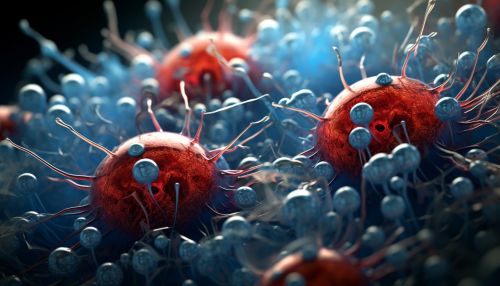The Role of Immune Checkpoints in Cancer Therapy
Introduction
The immune system plays a pivotal role in the body's defense against diseases, including cancer. One of the key mechanisms through which the immune system operates is via immune checkpoints. These are regulatory pathways integral to maintaining self-tolerance and modulating the duration and amplitude of immune responses, which is crucial in a variety of physiological settings. In the context of cancer, immune checkpoints can be manipulated to enhance the body's immune response against tumor cells. This article delves into the role of immune checkpoints in cancer therapy.


Immune Checkpoints: An Overview
Immune checkpoints are a variety of inhibitory pathways hardwired into the immune system that are crucial for maintaining self-tolerance and preventing autoimmune diseases. These checkpoints are exploited by cancer cells to protect themselves from being attacked by the immune system.
The two most well-studied checkpoint proteins are PD-1 and CTLA-4. These proteins are found on the surface of T-cells, a type of white blood cell that plays a critical role in the immune response to cancer.
Immune Checkpoint Inhibitors in Cancer Therapy
Immune checkpoint inhibitors are a class of drugs that block checkpoint proteins from binding with their partner proteins. This prevents the "off" signal from being sent, allowing the immune cells to kill cancer cells more effectively.
There are several types of immune checkpoint inhibitors that have been approved for use in cancer treatment. These include PD-1 inhibitors, PD-L1 inhibitors, and CTLA-4 inhibitors. Each of these drugs works slightly differently, but all aim to enhance the immune system's ability to fight cancer.
PD-1 and PD-L1 Inhibitors
PD-1 inhibitors work by blocking the PD-1 protein on T-cells from interacting with PD-L1, a protein found on some normal (and often cancer) cells. This interaction usually tells the T-cells to leave the other cells alone. By blocking this interaction, PD-1 inhibitors allow the T-cells to attack cancer cells.
PD-L1 inhibitors, on the other hand, block the PD-L1 protein found on cancer cells from interacting with PD-1 on T-cells. This also allows the T-cells to attack cancer cells.
CTLA-4 Inhibitors
CTLA-4 inhibitors work by blocking the interaction of CTLA-4 on T-cells with its partner proteins on other immune cells. This interaction usually sends an "off" signal to the T-cells. By blocking this interaction, CTLA-4 inhibitors allow the T-cells to stay active longer, increasing their ability to kill cancer cells.
Clinical Applications and Limitations
Immune checkpoint inhibitors have shown significant promise in the treatment of a variety of cancers, including melanoma, lung cancer, kidney cancer, bladder cancer, and Hodgkin lymphoma. However, not all patients respond to these treatments, and there can be serious side effects, including immune-related adverse events (irAEs).
Research is ongoing to identify biomarkers that can predict response to immune checkpoint inhibitors and to develop strategies to mitigate the side effects of these drugs.
Future Directions
The future of immune checkpoint inhibitors in cancer therapy is promising, with ongoing research exploring combination therapies, new targets, and ways to minimize side effects.
